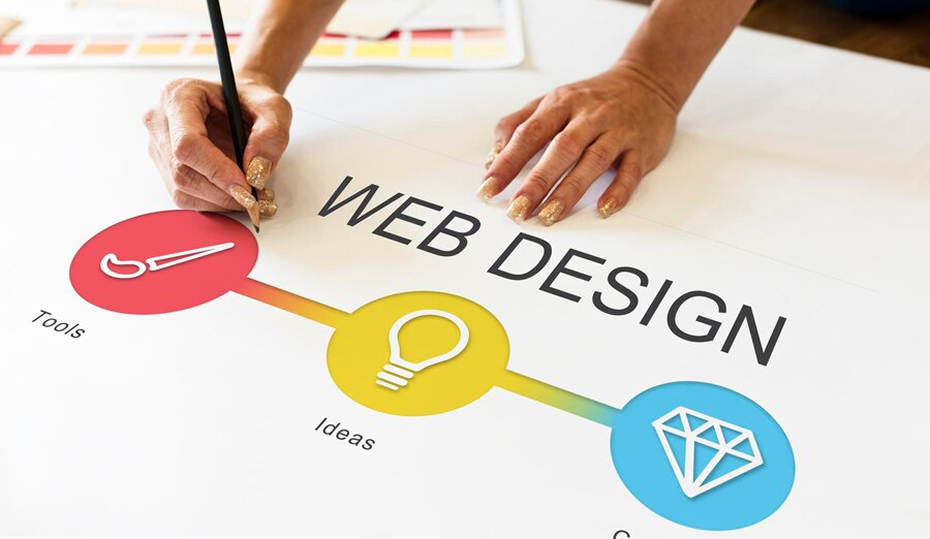Accessibility in Web Design refers to making websites that are usable by all users, including those with disabilities. It’s all about ensuring that visitors of all skill levels can effortlessly browse, comprehend, and engage with your website. In addition to helping those with impairments, putting an emphasis on accessibility enhances everyone’s user experience.
Accessibility in Web Design, what does it mean?
Designing websites that are easy for everyone to use, including those with disabilities, is known as accessibility. This entails ensuring that the website can still be used and understood by those who have visual, auditory, motor, or comprehension impairments. We do this by adhering to the Web Content Accessibility Guidelines (WCAG) and utilizing a number of crucial procedures:
- Captions and Transcripts: Supplying audio content with transcripts and video captions to assist users who are hard of hearing.
- Keyboard Navigation: Ensuring that visitors who are unable to use a mouse may completely traverse the website using a keyboard.
- Image Descriptions: Giving photos alt text allows screen readers to explain them to those who are blind or visually impaired.
- Color Contrast: All people, including those who are color blind, may easily read text and other items when high contrast colors are used.
By following these accessibility guidelines, we ensure that our website is user-friendly and beneficial for a wide range of users. Accessible web design makes your website more accessible and user-friendly while also benefiting individuals with impairments and enhancing everyone’s overall experience.
Web accessibility: what is it?
Making websites accessible to all users, including those with disabilities, is known as web accessibility. This means designing and developing websites that are easy to use, navigate, and understand for those with cognitive, visual, auditory, or mobility impairments. Accessible websites give all users an equal experience by enabling them to access information and complete tasks without any barriers. High contrast colors, readable typefaces, alt text for images, subtitles for videos, and making sure the website works properly with screen readers and keyboard navigation are all part of this.

Why Is Accessibility Important in Web Design?
Accessibility for all users is a critical component of websites. While the general public may visit nearly any website, individuals with specific disabilities encounter difficulties while trying to access websites. Creating and designing websites that are accessible to all users, including those with disabilities, is essential in today’s society. They get access to the same features and functionalities as others. Everyone should have access to services like internet banking, online shopping, health care, government programs, and more, regardless of their circumstances. It is imperative to guarantee that all individuals have equal access to online content.
Factors for Web Design Accessibility
Consider the following important factors while designing an accessible website:
- Using Symbols: To draw attention to key points in the information, use colors and symbols. For people who are colorblind and unable to discriminate between hues, this is especially beneficial. Symbols make sure that everyone can understand and access the information.
- Adding Media Components: Use films and pictures to help people better grasp and comprehend information. Media components can give people who might have trouble understanding text a better comprehension. Always provide captions or transcripts for movies and alt text for images to accommodate all users.
- Adaptability: Your website will look and function better on a variety of screens and devices if it is responsive. By making the website accessible across a range of viewports, including PCs, tablets, and smartphones, a responsive design improves accessibility.
- Better Identification of Interactive Elements: Ensure that buttons, links, and other interactive elements are clearly visible. To make these elements easy for users to identify and access, utilize distinct styles, clear labels, and hover effects.
- Adding Contrast: Everyone can read more easily if there is a strong contrast between the text and the background, especially those who are visually impaired. Use contrasting colors wisely because poor contrast might make material hard to read.
- Making Use of Proper Font and Spacing: Select legible fonts and utilize appropriate space to differentiate between different kinds of writing. Readability is improved and readers can explore and comprehend the content more readily when the font is clear and consistent. A visual hierarchy can be established by using different text sizes and styles.

The Advantages of Web Design Accessibility
The performance of your website as a whole as well as visitors with impairments benefit greatly from having an accessible website. The main advantages are as follows:
- Increased Usage Interaction: A website’s accessibility increases the likelihood that consumers will take the time to explore its features. Because it’s simpler for them to engage with your content, user engagement rises.
- Bounce Rate is decreased: A website that is both interactive and easily accessible keeps viewers interested and less likely to abandon it quickly. Your bounce rate will decrease as a result, showing that people find your website useful and user-friendly.
- Better Experience for Users: All users, including those with impairments, will be able to quickly access content if your website is accessible. This enhances their interaction and contentment with your website.
- Increases the SEO of websites: Increased web traffic and improved user interaction both help improve search engine results. Your SEO will improve since accessible websites are given preference by search engines like Google.
- An increase in web traffic: Accessible websites allow more people, including persons with disabilities, to utilize them. Your website traffic will rise as a result of expanding your prospective audience.
- Enhances the Recognition of Brands: A website that is easy to use improves the reputation of your company. By demonstrating your concern for every user, you raise brand awareness and trust.
Conclusion
Accessible web design benefits everyone, from users with disabilities to businesses seeking wider reach and better engagement. Making sure that everyone can use your website efficiently requires designing accessible websites. The overall experience is improved for all users, not just those with disabilities. By following accessibility guidelines, you improve usability, compliance, and overall site performance. The future of the web is inclusive-take action now to ensure your site welcomes all users.
We at InCreativeWeb are dedicated in constructing digital landscapes that are accessible to all. By implementing rigorous accessibility practices and adhering to established standards, we create inclusive online environments that empower users, enhance brand reputation, and foster a more equitable digital future. Our commitment to accessibility is not merely a compliance obligation; it is a fundamental principle that guides our web design and development processes.
We specialize in responsive, accessible, and SEO-optimized designs that enhance user experience and drive engagement. Whether you need a business site, eCommerce platform, or portfolio, we turn your vision into reality. Let’s create an accessible, high-performing website-contact us today!
Author
Jayesh Patel
Jayesh Patel is a Professional Web Developer & Designer and the Founder of InCreativeWeb.
As a highly Creative Web/Graphic/UI Designer - Front End / PHP / WordPress / Shopify Developer, with 14+ years of experience, he also provide complete solution from SEO to Digital Marketing. The passion he has for his work, his dedication, and ability to make quick, decisive decisions set him apart from the rest.
His first priority is to create a website with Complete SEO + Speed Up + WordPress Security Code of standards.